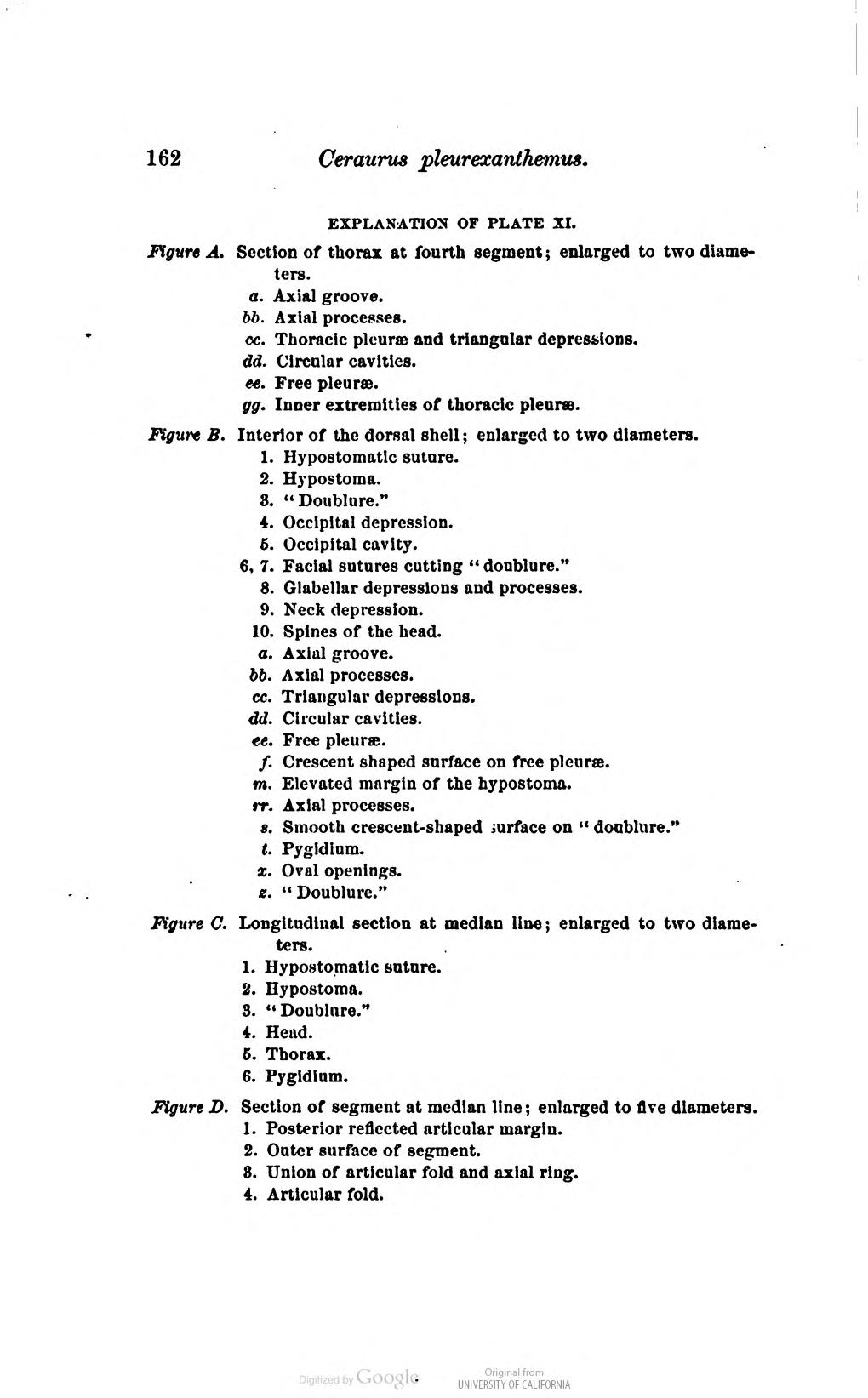This page has been validated.
162
Ceraurus pleurexanthemus.
EXPLANATION OF PLATE XI.
| Figure A. | Section of thorax at fourth segment; enlarged to two diameters. | |
| a. | Axial groove. | |
| bb. | Axial processes. | |
| cc. | Thoracic pleuræ and triangular depressions. | |
| dd. | Circular cavities. | |
| ее. | Free pleuræ. | |
| gg. | Inner extremities of thoracic pleuræ. | |
| Figure B. | Interior of the dorsal shell; enlarged to two diameters. | |
| 1. | Hypostomatic suture. | |
| 2. | Hypostoma. | |
| 3. | "Doublure." | |
| 4. | Occipital depression. | |
| 5. | Occipital cavity. | |
| 6,7. | Facial sutures cutting "doublure." | |
| 8. | Glabellar depressions and processes. | |
| 9. | Neck depression. | |
| 10. | Spines of the head. | |
| a. | Axial groove. | |
| bb. | Axial processes. | |
| cc. | Triangular depressions. | |
| dd. | Circular cavities. | |
| ее. | Free pleuræ. | |
| f. | Crescent shaped surface on free pleuræ. | |
| m. | Elevated margin of the hypostoma. | |
| rr. | Axial processes. | |
| s. | Smooth crescent-shaped surface on "doublure." | |
| t. | Pygidium. | |
| x. | Oval openings. | |
| z. | "Doublure." | |
| Figure C. | Longitudinal section at median line; enlarged to two diameters. | |
| 1. | Hypostomatic suture. | |
| 2. | Hypostoma. | |
| 3. | "Doublure." | |
| 4. | Head. | |
| 5. | Thorax. | |
| 6. | Pygidium. | |
| Figure D. | Section of segment at median line; enlarged to five diameters. | |
| 1. | Posterior reflected articular margin. | |
| 2. | Outer surface of segment. | |
| 3. | Union of articular fold and axial ring. | |
| 4. | Articular fold. | |
